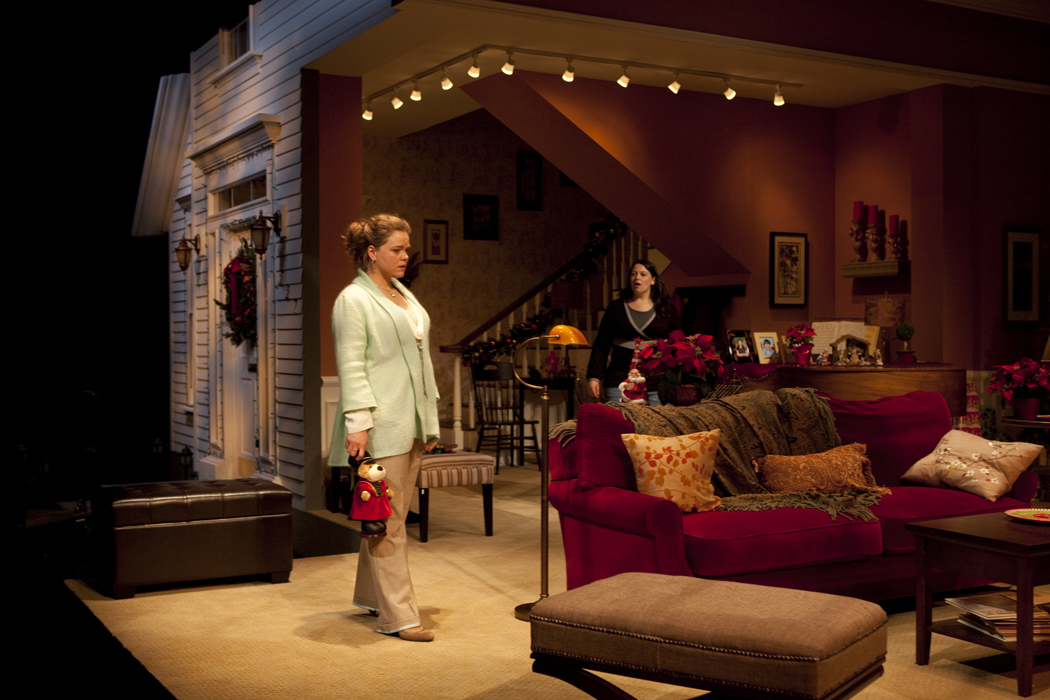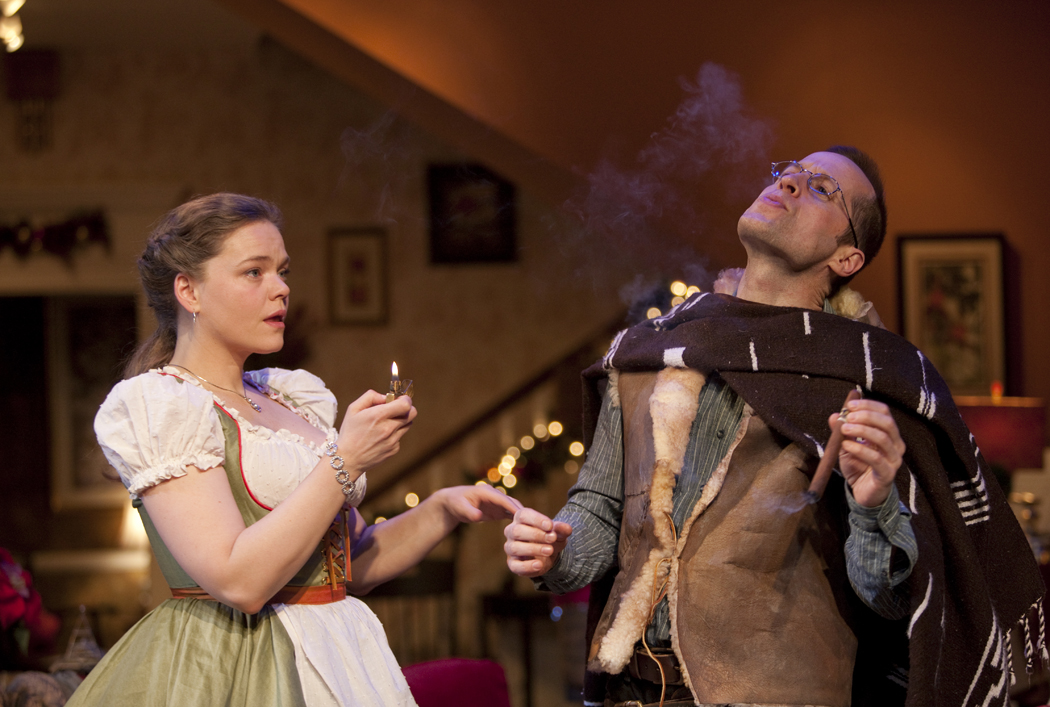One of the real pleasures in perusing writers’ meditations on the books they read is the occasional flash of real insight they offer because they have not hemmed themselves in by the standard views agreed upon by, say, literary scholars of a genre or literary tradition. That at least was my experience reading P.D. James’ recent collection of essays on the mystery, Talking about Detective Fiction. What caught my eye were not so much her thoughts on Edgar Allan Poe or her fondness for Arthur Conan Doyle or even her views of Dame Agatha, but her almost off-the-cuff inclusion of John le Carre. Most know Le Carre as the most revered of spy novelists. James suggests that Tinker, Tailor, Soldier, Spy, the first novel to feature spymaster George Smiley as a main character, is actually a mystery—an idea that got my attention, especially since the novel had been sitting on my bookshelf for a few years. In fact, it was one of several Le Carre novels in my possession that for years I had been meaning to get to but never set aside the time to actually read. Now I was intrigued.
Although Le Carre’s earliest breakout novel was The Spy Who Came in the From the Cold, it is Tinker, Tailor that lets the curious peer at the clockwork of a British spy agency (referred to throughout as “the Circus”). I let no cats out of bags by pointing out how this 400-pager has, at its center, the story of ferreting out a mole who has corrupted nearly every one of the Circus’ covert operations. Like most locked-room mysteries, there are five suspects and Smiley, as Le Carre’s Hercule Poirot, has set himself to the task of uncovering the mole’s identity.
It all works as far as the tropes in spy novels and detective fiction go. But there is something more to LeCarre—something with which his readers are already familiar and for me was a bit of a shock to discover, albeit a pleasurable one. In brief, the life of a spy is a shabby one. Not morally shabby…well, that, too, of course…but materially shabby.
Through Tinker, Tailor—and you see this repeated in Le Carre’s Looking Glass War—there are interminable complaints about lack of funds for necessary resources. The spymasters are always looking over their shoulders to make sure that there is enough data to show their superiors, enough action to be had to justify next year’s budget. Even as the mystery reader in me consumed pages in Tinker, Tailor to see who that damned mole was selling British assets (human ones, that is) up the river, the culture critic noted how the success of the mole and the support unknowingly granted by others in his artful mendacities were all the direct result to keep budgets intact by supplying higher ups with a steady flow of information (or “intel,” as today’s wonks call it).
There’s no getting around how much the novel’s actors are driven by the filthy lucre. There are drafty rooms, unpainted walls, old file cabinets, dirty teacups, and never, never enough coal for the fireplace. The offices of the Circus are not even close to the squeaky clean hallways and super-secure labs of Tom Cruise’s Mission Impossible’s or the more mundane, but still nicely situated glass-walled offices of the Bourne Ultimatum. For the staff of the Circus, piles of paper, undusted shelves, and peeling paint reflect the daily drudgery of the spy trade, which involves mostly a lot of bureaucratic wrangling for the spymasters and twiddle-your-thumbs waiting for the agents.
Still LeCarre manages to make it all work because of these quotidian realities. To be blunt, it’s almost impossible nowadays—for me at least—to watch any of the spy shows and their now-ridiculous comic spoofs, from the newest James Bond flicks to Spy Kids, and not in the end be bored by the unreal and usually ridiculous exploits (Transporter 2 comes to mind, having done laundry through it a few days ago).
It’s rare to find books and movies clearly enmeshed in a genre (in this case, “spy thriller”) that are brave enough to deflate our culturally projected fantasies. I like the Bourne movies (they’re actually better than the books) because they try, albeit feebly, to “humanize” Jason Bourne. But they are still kung fu fighting fantasies, ones where we admire the Jackie Chan-like ingenuities of battle from the flung ashtrays to rolled-up magazines-turned-truncheons.
Perhaps the best cinematic equivalent to what Le Carre did to the spy novel—an essential defrocking of the genre—is Steven Spielberg’s Munich. Here is a movie about spywork where everything that can go wrong does, without the film devolving into comedy. In Tinker, Tailor, the same can be said for the participants of the Circus, who show themselves to be preening careerists with degrees from Oxford and Cambridge. By the novel’s finish, you can’t help but feel that the true “spymasters” are not the agency’s directors—in Tinker, Tailor the former agency director brought down by the mole is ironically named “Control”—but the accountants who keep the books and have the power to dry up the resources that make possible the spy fantasies that we indulge in the act of reading books of this ilk.
 Director Devin Brain and the cast of the current Yale Summer Cabaret show, The Phoenix, have given themselves quite a task: to render a situation that could be either fantasy or reality, when either is potentially alienating. Based on a haunting story by best-selling Australian author Isobelle Carmody, the play has been derived by the cast via an improvisational process of discovery, which means that the presentation is not scripted so much as agreed upon through trial and error during a long period of gestation.
Director Devin Brain and the cast of the current Yale Summer Cabaret show, The Phoenix, have given themselves quite a task: to render a situation that could be either fantasy or reality, when either is potentially alienating. Based on a haunting story by best-selling Australian author Isobelle Carmody, the play has been derived by the cast via an improvisational process of discovery, which means that the presentation is not scripted so much as agreed upon through trial and error during a long period of gestation.
 The Long Wharf Theatre production of Henrik Ibsen's A Doll's House managed a surprising feat: it made the play more entertaining without significantly altering it. If you're a purist who wants to see Ibsen played straight, it does that; but if you think that a play like ADH, with its winsome wifey who gets into some hot water due to an "innocent" forgery, then gets out of it only to slam the door on her happy-ever-after home, is a bit dated and could use some kind of make-over, well, this show does that too.
The Long Wharf Theatre production of Henrik Ibsen's A Doll's House managed a surprising feat: it made the play more entertaining without significantly altering it. If you're a purist who wants to see Ibsen played straight, it does that; but if you think that a play like ADH, with its winsome wifey who gets into some hot water due to an "innocent" forgery, then gets out of it only to slam the door on her happy-ever-after home, is a bit dated and could use some kind of make-over, well, this show does that too.
 “Art” by Yasmina Reza first appeared in Paris in 1995. Shortly afterwards it was translated into English for the British stage and turned up at the Royale Theatre (now the Bernard B. Jacobs Theatre) on Broadway on March 1, 1998. The cast was stellar for this three-person play, performed without intermission. The six-month Broadway run included Alan Alda, Victor Garber, and Alfred Molina, all well known film and theatre performers.
“Art” by Yasmina Reza first appeared in Paris in 1995. Shortly afterwards it was translated into English for the British stage and turned up at the Royale Theatre (now the Bernard B. Jacobs Theatre) on Broadway on March 1, 1998. The cast was stellar for this three-person play, performed without intermission. The six-month Broadway run included Alan Alda, Victor Garber, and Alfred Molina, all well known film and theatre performers. Bernard-Marie Koltès' Battle of Black and Dogs (Combat de nègre et de chiens), translated by Michaël Attias, and directed by Robert Woodruff, is the second play this season at the Yale Rep to take us to vague environs in Africa to witness a drama among a small group of people cut off from the world at large. Like Danai Gurira's Eclipsed, BBD places us in a compound, but this time it's a "construction site run by a foreign company in a West African country, anywhere from Senegal to Nigeria," where the main characters, white and French, are confronted by Alboury (Albert Jones), a member of a local Wolof tribe who wants to retrieve the body of a worker at the site who has recently died or been killed.
Bernard-Marie Koltès' Battle of Black and Dogs (Combat de nègre et de chiens), translated by Michaël Attias, and directed by Robert Woodruff, is the second play this season at the Yale Rep to take us to vague environs in Africa to witness a drama among a small group of people cut off from the world at large. Like Danai Gurira's Eclipsed, BBD places us in a compound, but this time it's a "construction site run by a foreign company in a West African country, anywhere from Senegal to Nigeria," where the main characters, white and French, are confronted by Alboury (Albert Jones), a member of a local Wolof tribe who wants to retrieve the body of a worker at the site who has recently died or been killed.